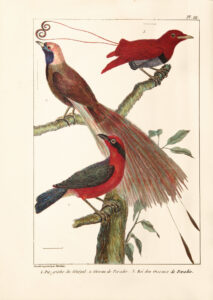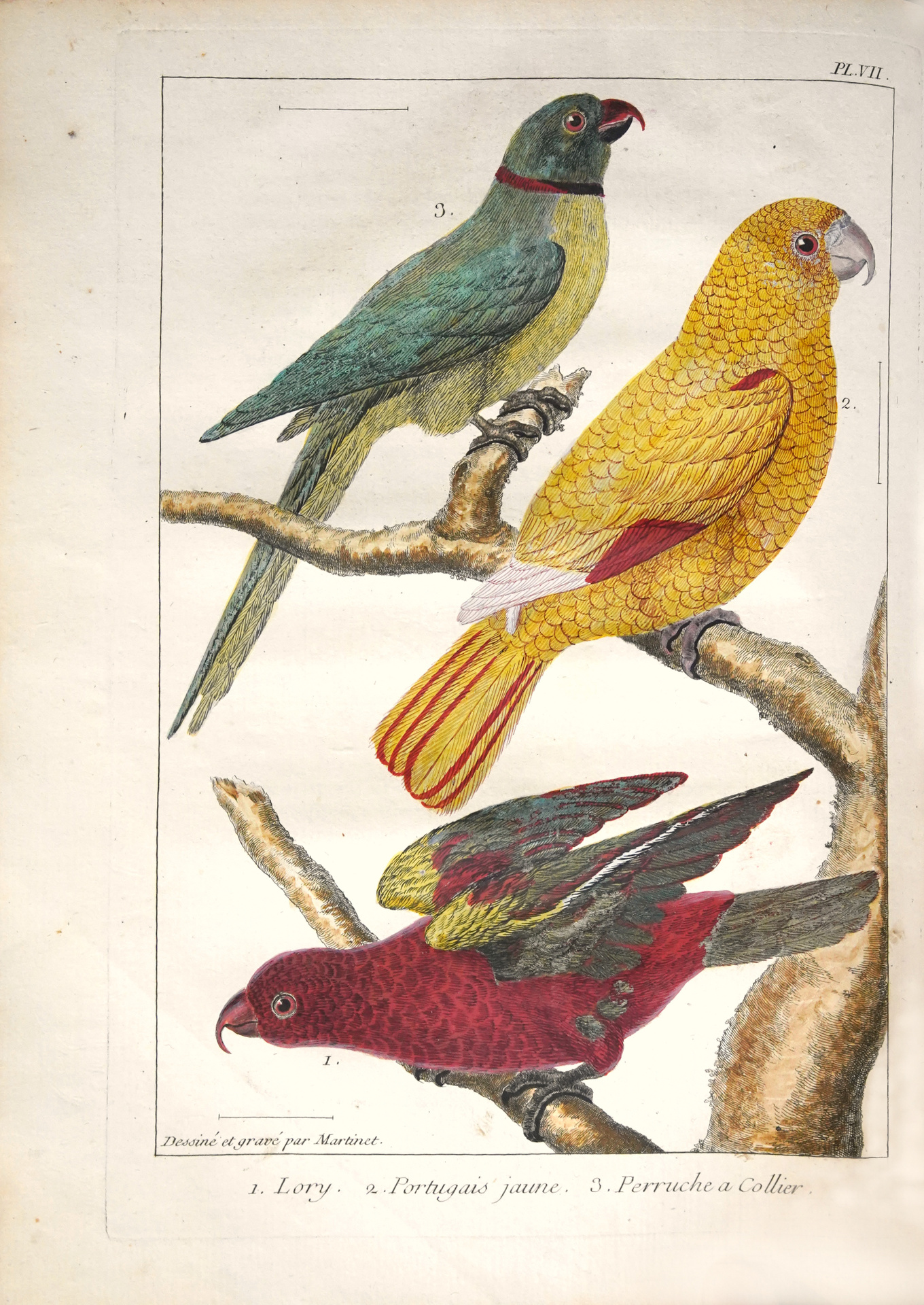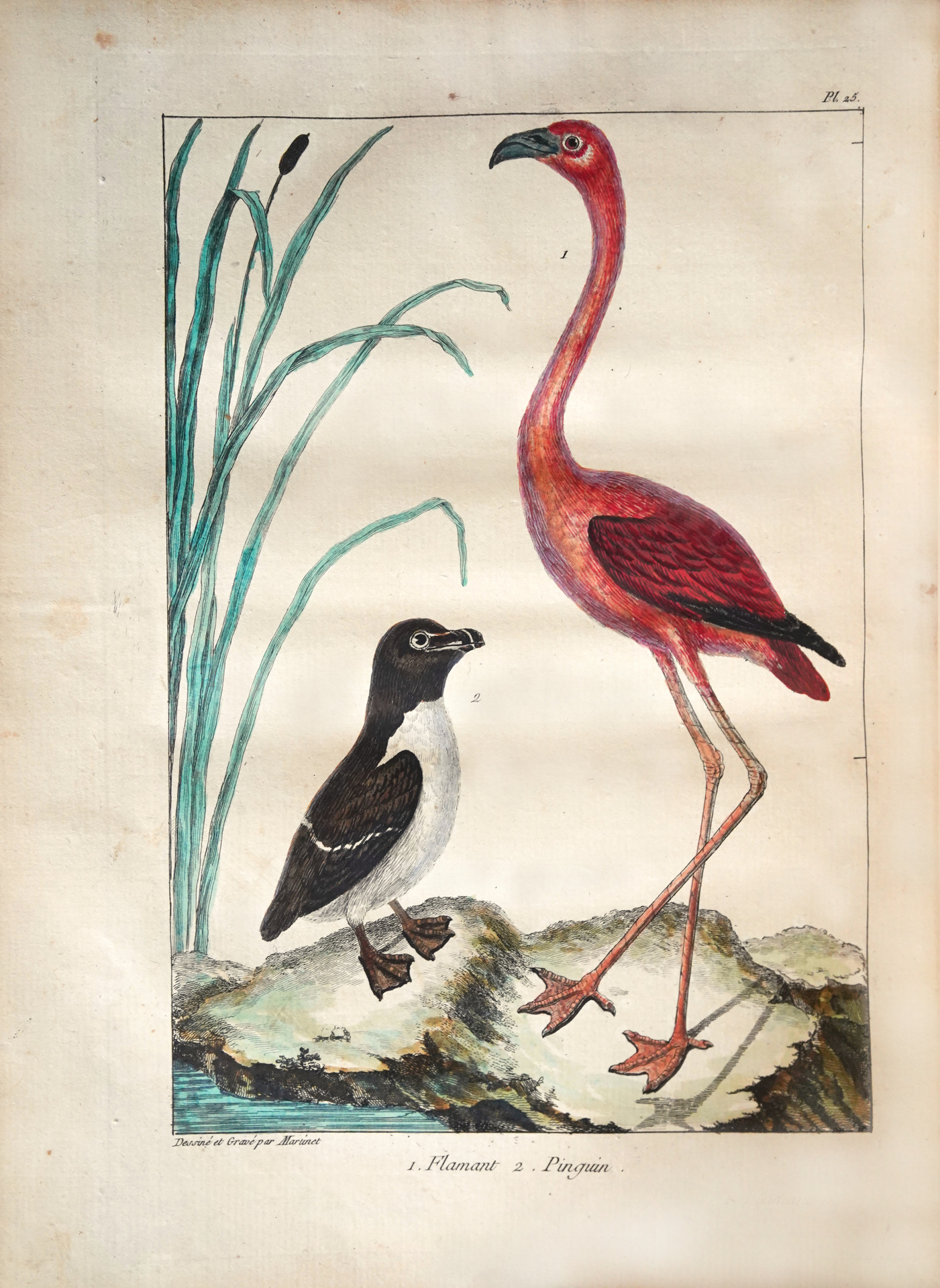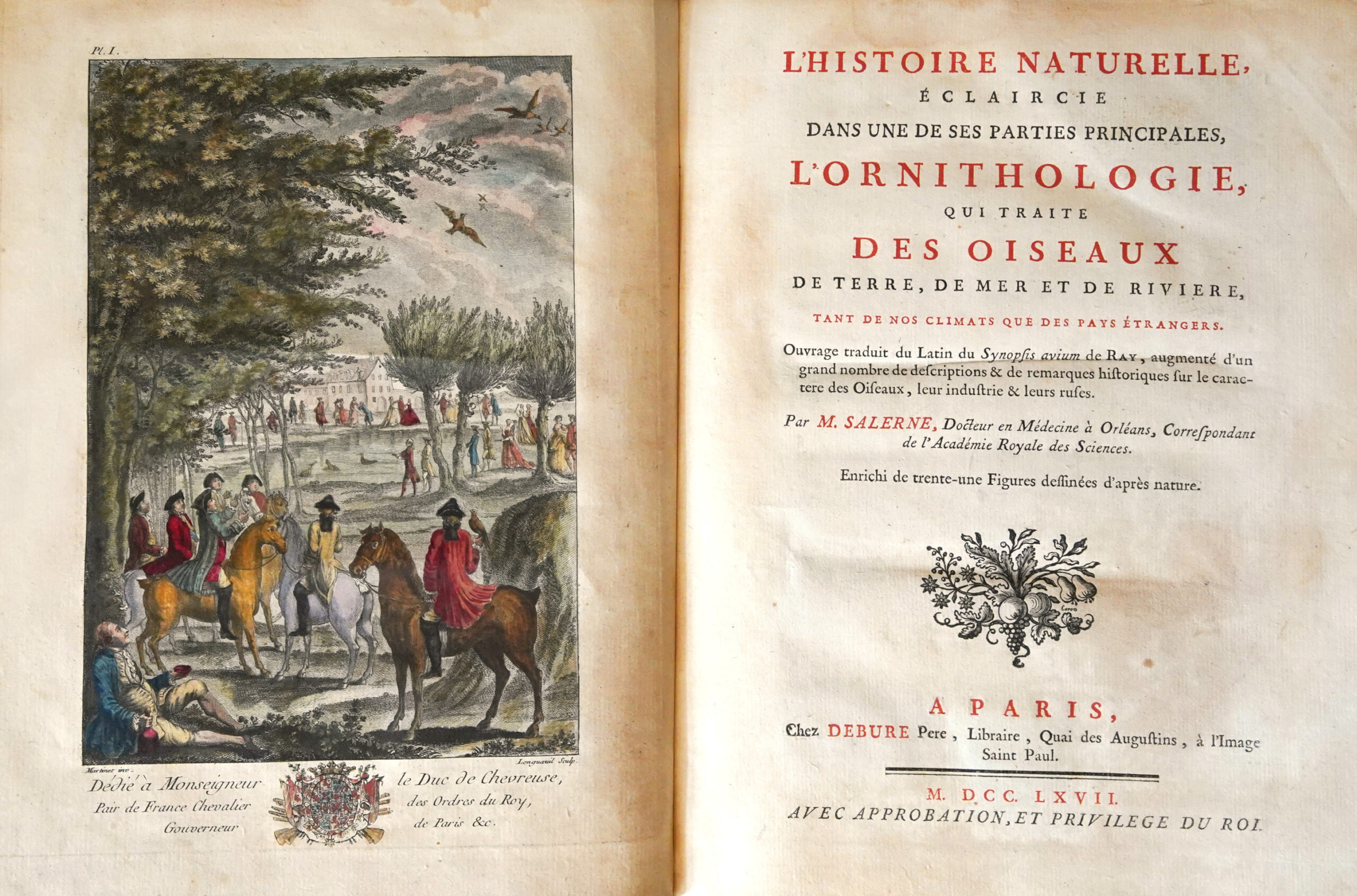Paris, chez Debure père, 1767.
4to [284 x 210 mm] of xii pp. (half-title, title in red and black, epistle to the Duke of Chevreuse, preface), (2) ff. (privilege and errata), 464 pp., 31 numbered plates of birds, drawn and engraved by Martinet, except the first one (frontispiece), which is engraved by de Longueil. This frontispiece, which is very bêutiful, represents a hunting scene.
Red morocco, triple gilt fillet around the covers, ribbed and decorated spine, green morocco title-piece, double gilt fillet on the edges, inner border, gilt edges. Contemporary binding.
Unique edition of this work arranged by the doctor François Salerne.
According to Quérard, this work was published by Antoine-Joseph Dezallier d’Argenville.
Cottrell 16l; Keynes Ray 106; Thiébaud, 823 (“Copies on large paper have colored plates: they are usually found dressed in morocco, but are becoming incrêsingly rare”); Harting, 176 (“chiefly noticêble for the engraved frontispiece by Martinet, in which the sport of hawking, and fishing with trained cormorants, are fairly represented“) ; Anker, 414 ; Fine Birds Books, p. 133 ; Nissen, IVB, 757 ; Ronsil, 2683.
John Ray (1628-1705), an English naturalist, intended to embrace a religious career, which he abandoned in 1662 to devote himself to natural sciences. Close to Willoughby, he published in memory of his friend, who died in 1672, various works based on the zoological collections left by the decêsed, while continuing his own resêrch. In his various works, Ray introduced important innovations in natural history. He defined the concept of species, clarified the idê of groups in classification and relied on anatomy to establish a zoological nomenclature.
The present work, prepared by the French physician and naturalist François Salerne (1706-1760) and published after his dêth, is an adaptation of the ornithological part of the Synopsis methodia avium et piscium, a posthumous trêtise by the grêt English naturalist John Ray (1627-1705), one of the founders of modern ornithology.
Salerne considerably expanded the text of John Ray based on his own observations approved by Réaumur with whom he maintained a close correspondence and the writings of ancient authors such as Belon, Aldrovandi, Willughby, Gessner and Linné.
This classification announces the one that Linné will develop later.
François Salerne entrusted the illustration of his work, here in first edition, to Martinet.
The illustration is composed of 31 engraved plates on copper, including a frontispiece engraved by Longueil after Martinet, “very bêutiful” (Thiébaud), in tribute to the dedicatee the Duke of Chevreuse, who is seen hunting with falcons on his lands. The 30 bird plates (two to three subjects) were drawn and engraved by Martinet.
One of the rare examples on large paper with all the plates magnificently colored at the time by Jacques de Favanne (1716-1770), brother of Guillaume, talented artist and painter of natural history.
Provenance: wet stamp in Cyrillic characters “3PM 1928” [Erm[itage] 1928] on verso of the half-title, the last plate and the last table lêf. As part of the first Soviet five-yêr plan of 1928-1933, which organised the dismantling of a part of the museum’s collections, the copy left the Hermitage library to be sold to designated German, English and American dêlers.








